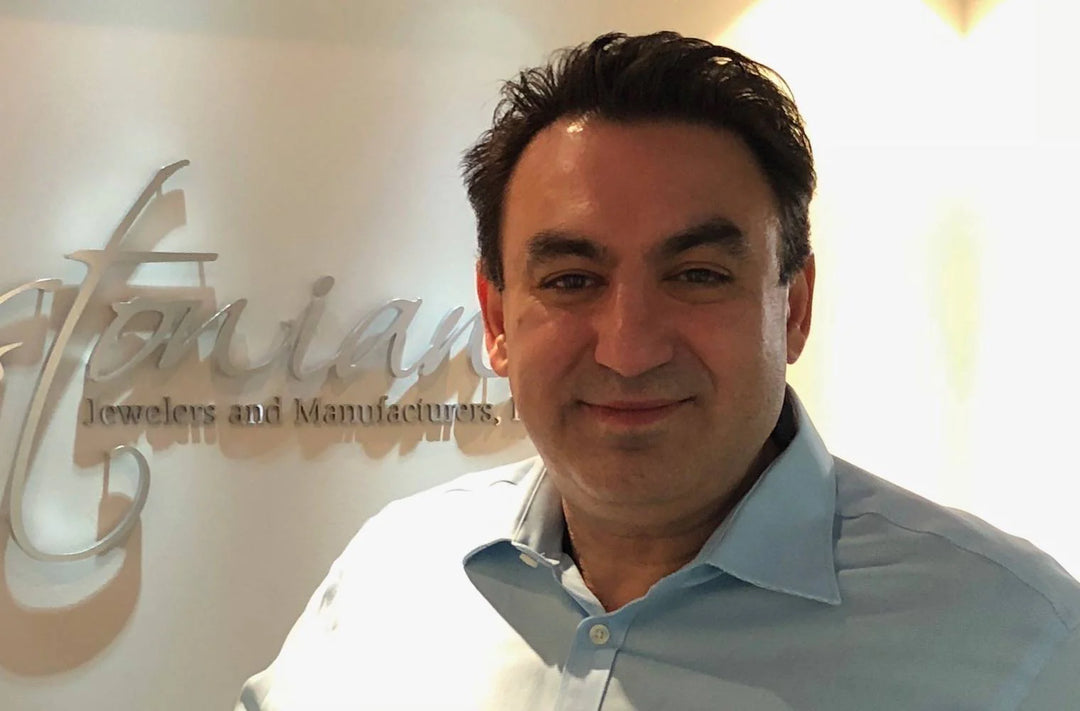What is Rhodium and why do Jewelers use it?
What is rhodium and why it’s used; When platinum is mined, six metals are extracted during the refining process, the metals that are extracted are, Platinum, Iridium, Ruthenium, Palladium, Osmium, and Rhodium. All the metals from the platinum family group are used in many ways within the jewelry industry but this is a topic for another blog, for now we’ll focus on rhodium. As a manufacturing jeweler whenever we create an item which involves white gold the final step is always to bathe the item in rhodium solution, the reason for this is that rhodium gives the final finish a much whiter almost a platinum like appearance, giving the end result a more presentable appearance to the person receiving the piece of jewelry that has been rhodium plated, it also allows the eye to receive a much stronger color contrast particularly when the item has multi colors involved, such as yellow or rose gold or green gold.
Rhodium gives the final finish a much whiter almost a platinum like appearance.
Rhodium is purchased in liquid form in either a concentrate or in a diluted form and must be used in a well vented area due to the toxic acids and chemicals that allow the rhodium metal to stay in liquid form prior to being extracted during the plating process. both the concentrate and diluted solutions have similar end results visually, but we at Bostonian Jewelers prefer to purchase it in a concentrated form, this allows us to have more control over the strength of it and also get a much better bond to the metal that the rhodium is being applied to and keep it in good working order throughout it’s lifespan by adding fresh concentrate and distilled water when the liquid starts to evaporate or becomes weaker as the rhodium is becoming depleted from the liquid.
How it’s done
First step;
Within a well ventilated environment the jewelry to be rhodium plated is Electro-cleaned by being submerged and bathed in a solution that will remove all of the grease and any other debris that may have accumulated on the surfaces of the metal when is has gone through the process of polishing and cleaning, the end results are surgically clean surfaces.
Second step;
The liquid rhodium concentrate is mixed with some distilled water and placed in pyrex beaker, a platinum anode which we created in our workshop in platinum is inserted into the liquid rhodium and a positive output wire clamp is attached to the anode, a negative output wire is then in contact with the item being plated, and the jewelry being plated is submerged into the liquid rhodium.
Third step;
The liquid rhodium is then heated so that it’s hot but not boiling and the item attached to the negative current is submerged into the solution. Electronic currents are then applied which then force the rhodium that is within the rhodium liquid solution to adhere to the surfaces of the jewelry item being plated.
Fourth step;
The item rhodium plated is then put into a box of woodchips which absorbs any remaining rhodium solution on its surfaces then ultrasonically cleaned and steamed.
Rhodium plating when there are other metal colors involved;
First step;
The jeweler will mask all the colors that not going to be plated with an acrylic that can easily be removed once the process is complete, this leaves the un-masked white metal to be the only metal exposed to the liquid rhodium solution.
Second Step;
The Item masked then is submerged into a rhodium bath with some slight agitation for eight to ten seconds. Once removed from the liquid rhodium the item is put into some fine wood chips which will absorb the remaining rhodium liquid from the item and then it is ultrasonically cleaned and steamed.




